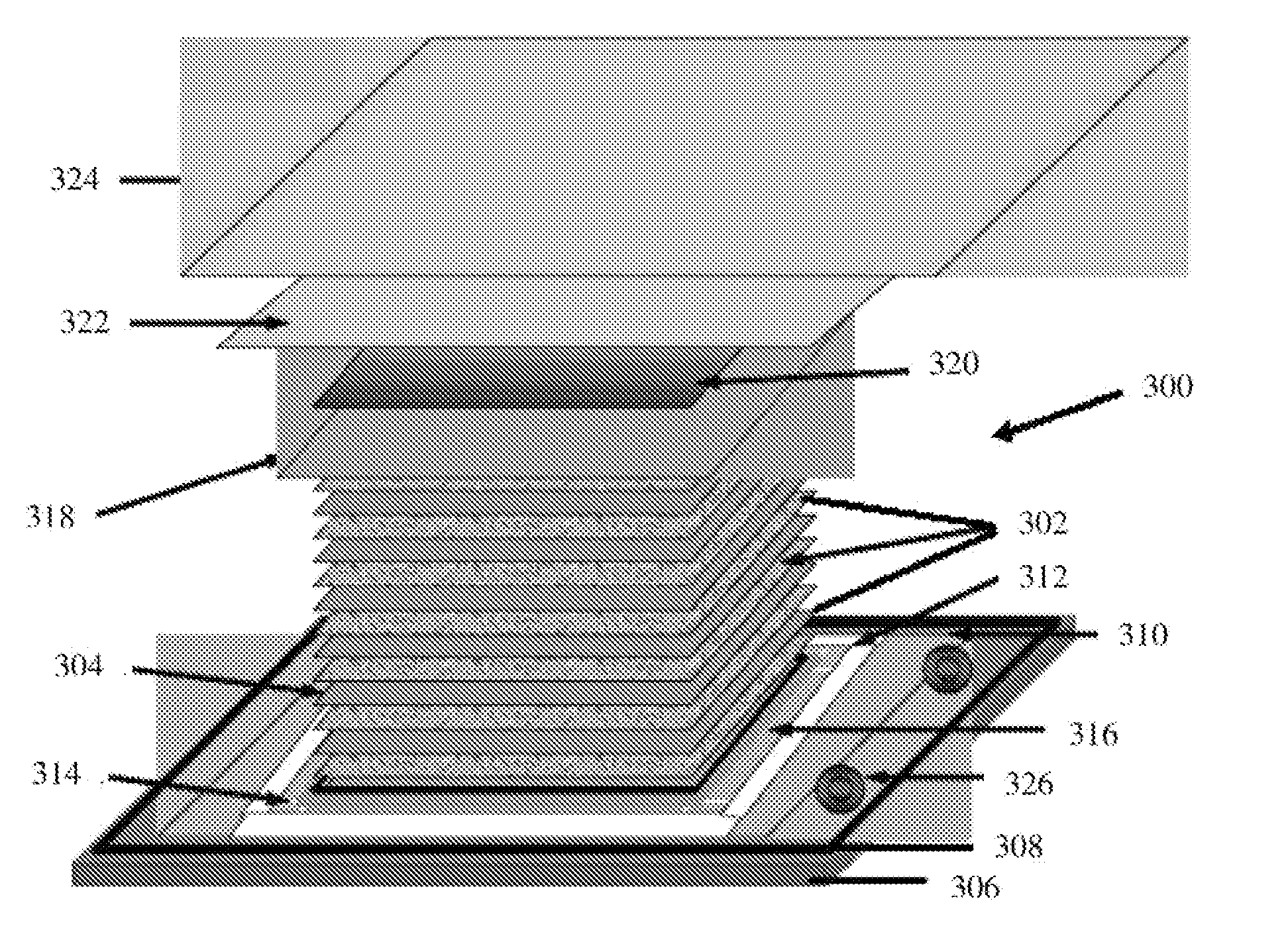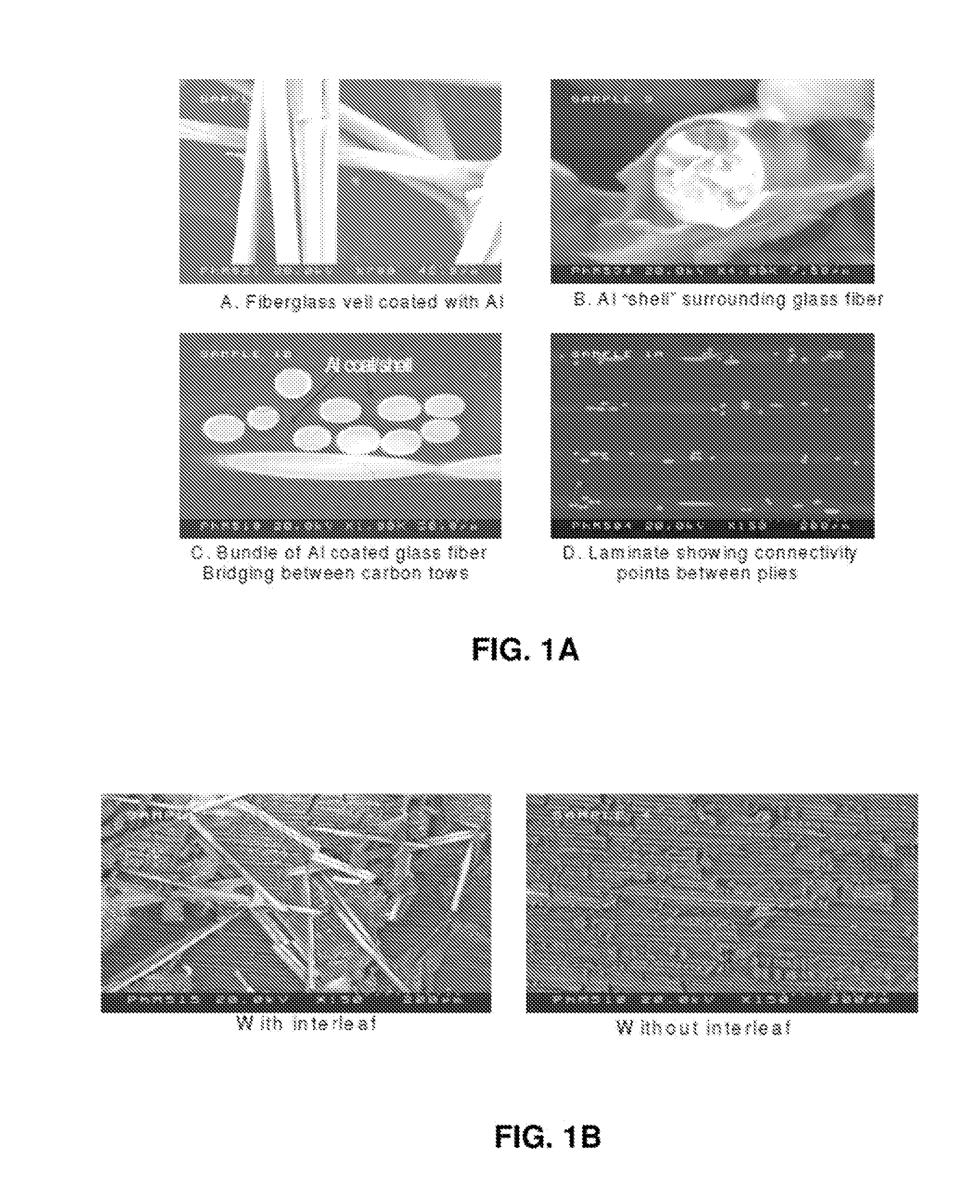Methods of imparting conductivity to materials used in composite article fabrication & materials thereof
a technology of conductivity and materials, applied in the direction of weaving, instruments, aircraft static dischargers, etc., can solve the problems of quasi-isotropic or unidirectional ply, and achieve the effects of reducing damage, increasing toughness, and increasing compression after impact valu
- Summary
- Abstract
- Description
- Claims
- Application Information
AI Technical Summary
Benefits of technology
Problems solved by technology
Method used
Image
Examples
example 1
[0034]Various veils and fabrics were coated using physical vapor, deposition (PVD) to test the conductivity of the resultant metal-coated veils and fabrics. The metal was coated in one or more continuous layers. Carbon, fiberglass and thermoplastic veils (woven and non-woven) with metal coatings ranging from about 0.5μ to about 2μ in thickness (one-sided or two-sided coatings) were coated using a PVD chamber. Fiberglass and carbon fabrics (woven and non-woven) with metal coatings ranging from about 0.5μ to about 2μ in thickness (one-sided or two-sided coatings) were also coated using the same vacuum chamber.
[0035]The following Table 1 lists representative results of metal-coated sheet materials according to embodiments of the invention and compared with standards:
TABLE 1ArealAreal WeightThicknessSidesWeightdifferenceMetal(μ)Coated(gsm)(gsm)Carbon veilN / AN / AN / A11.4N / A(reference)Carbon veilAl1μ113.52.1Carbon veilAl1μ214.43.0Carbon veilCu1μ113.42.0Carbon veilCu1μ126.314.9Carbon veilCu1...
example 2
[0040]Laminates were fabricated to determine the effect of through-laminate bulk resistance of the interleaved, metal-coated veil. Mechanical properties of these laminates were also tested. Plies of prepreg (i.e., prepreg carbon fabric with either 0% or 10% particle toughening) were assembled by known methods with and without interleaved metal-coated veils according to embodiments of the invention. Both unidirectional and quasi-isotropic laminates were tested.
[0041]The following Table 2 lists representative results of resistivity measurements of laminates prepared with at least one metal-coated veil according to embodiments of the invention and compared with standards:
TABLE 2Bulk resistivity (ohm-cm)ThicknessThroughThroughThroughOrientationCmthicknesswidthlength0% tough, no veil(0)260.373135850.00.0420% tough, Cu-coated(0)260.38617.20.1470.012veil10% tough, no veil(0)260.391>10,00013.60.02610% tough, Cu-coated(0)260.39633.20.1110.010veil10% tough, Al-coated(0)260.40113510.5210.011ve...
PUM
| Property | Measurement | Unit |
|---|---|---|
| Weight | aaaaa | aaaaa |
| Thickness | aaaaa | aaaaa |
| Pressure | aaaaa | aaaaa |
Abstract
Description
Claims
Application Information
 Login to View More
Login to View More - R&D
- Intellectual Property
- Life Sciences
- Materials
- Tech Scout
- Unparalleled Data Quality
- Higher Quality Content
- 60% Fewer Hallucinations
Browse by: Latest US Patents, China's latest patents, Technical Efficacy Thesaurus, Application Domain, Technology Topic, Popular Technical Reports.
© 2025 PatSnap. All rights reserved.Legal|Privacy policy|Modern Slavery Act Transparency Statement|Sitemap|About US| Contact US: help@patsnap.com



